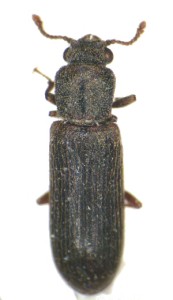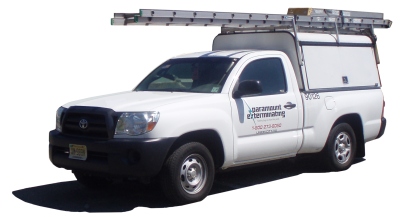OCCASIONAL INVADERS
Occasional invaders are often pests during the Spring and Summer months, coming in when the door is left open. But many of them can also become a problem inside your home, infesting your food, damaging your clothing, and being a plain nuisance. They can be difficult to get rid of, luckily we are here to help.
KEEPING PESTS WHERE THEY BELONG
- Complete pest control – Your pest control technician is your pest expert. They will take the time to analyze the problem and create a treatment program that will work to solve it. A variety of control techniques are applied including spraying, baiting, and trapping methods based on what the technician finds during your inspection.
- Long-term Protection – Guarding your home or business means creating a barrier that pests can’t survive. Our exterior perimeter treatments will help keep pests out for good.
- Maintaining pressure – We schedule you for follow up visit 1-2 weeks after your initial service so that your technician can assess the treatment program retreat areas as needed.
- Prevention for the future – Your technician will also point out potential pest entry points, food/water sources that may attract pests, and educate you on how to prevent future problems.
HOW DOES PARAMOUNT GET RID OF PESTS?
STEP 1: INSPECTION AND TREATMENT
Your technician will assess the problem and perform the initial treatment. Spraying, baiting, and trapping methods are all applied based on what the technician finds during your inspection. This service generally takes 30 – 45 minutes and will knock out the majority of your pest activity. Occasionally, people will see what appears to be an increase in pest activity, rest assured this is a result of the treatment forcing pests out of their hiding places. This will reside within a day or two.
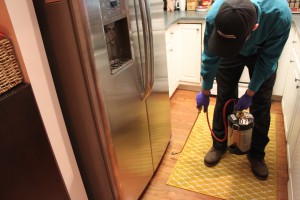
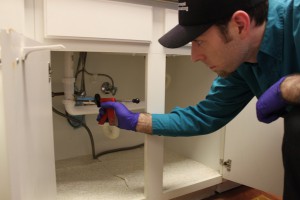
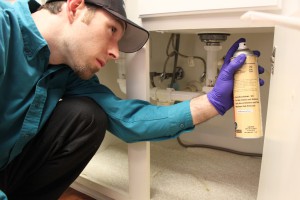
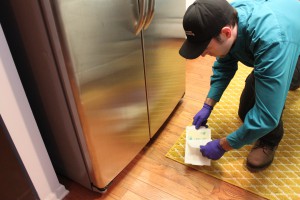
STEP 2: FOLLOW-UP TREATMENT AND REINSPECTION
We schedule you for follow up visit 1-2 weeks after your initial service so that your technician can assess the treatment program, retreat problem areas, and replace controls as needed. Your technician will ask you if you have seen any more pest activity and will ask you to pin point affected areas so they can be treated aggressively to achieve the quickest results possible. This service generally take 20-30 minutes and ensures that the problem will not return.
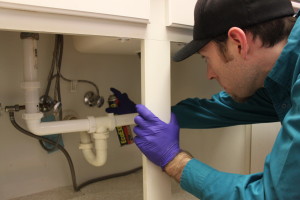
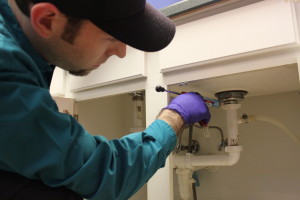
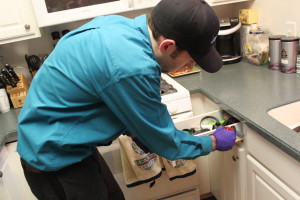

STEP 3: SECOND FOLLOW-UP TREATMENT AND REINSPECTION (Optional)
While we handle most pest problems in the first two visits, sometimes additional follow-up services are needed to take care of more advanced problems. Your technician will discuss this with you if they feel its necessary. Additional treatment measures like fogging are available for large spaces and aggressive infestations. The time allotted for second follow-up services varies depending on the severity of the problem.
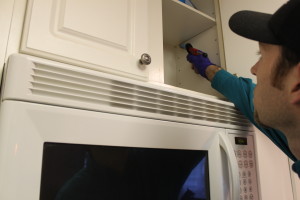

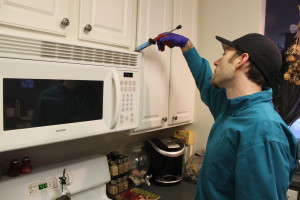
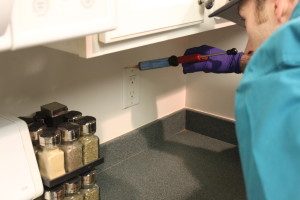
LONG-TERM PROTECTION PLANS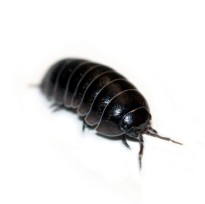
- Residual treatments – Takes care of the most common nuisance pests, and lasts well beyond your treatment date to ensure continued results.
- Pest activity monitoring – Pest monitors are placed in areas that are prone to problems. They are replaced on each service as needed.
- No cost emergency visits – should covered pest issues ever arise during you ant treatment program, we will be out to retreat at no cost to you!
FREE ESTIMATES – ZERO OBLIGATIONS
WHAT TYPE OF PEST IS IT?
Facts: Centipedes
Name: Scutigera coleoptrata
Appearance: Adult centipedes are long and thin in shape, brown in color, and have segmented bodies. Despite having a name that means “100 legs”, they actually have from 15 to 191 pairs of legs. They average about one inch in length.
Habit: Centipedes are nocturnal creatures that like areas with high levels of moisture. They are often found in basements, garages, kitchens, bathrooms, and other areas that stay damp. Despite having compound eyes, the common house centipede is nearly blind and relies on its sensitive antennae to track down food and survive.
Health/Damage Concerns: Centipedes have venom which is used to paralyze their prey. This venom is not commonly fatal to humans, but can cause more severe reactions for people that are allegoric to it. Bites should be treated by first cleaning with soap and water, and then covered to prevent infection. If any sign of infection occurs seek medical help immediately! Fatal bites are rare, but have occurred in small children, the sick, and the elderly.
Diet: Carnivorous/scavenger; centipedes with eat a variety of crawling pests like worms, spiders, and even other centipedes.
Reproduction: Centipedes females attract males with pheromone signals. Male centipedes then create what is called a spermatophore, a silken pad weaved by the male and deposited with sperm, and leaves it for the female. This is often followed by a mating ritual performed by the male of him tapping his antennae on the female’s rear legs. Females will hide in protected areas overwinter and lay her eggs in rotting logs or moist soil during the spring and summer months. Most species of centipedes will protect their eggs until they are hatched. Most centipedes also grow a segment and more legs with each molt, reaching adulthood at the onset of their 15th pair of legs.
Lyctinae
Appearance: Brown to reddish-brown in color, Powderpost beetles are usually 1/8 to 1/4 inches in length. Their presence is often determined by the 1/8 inch diameter exit holes that they leave behind. The exit holes are more commonly seen that the insect itself.
Habit: Powderpost beetles are often found in stored lumber, finished wood, furniture, and wooden rafters. They lay eggs on seasoned hardwoods and the young will burrow into the pores of the wood. They feed on the wood itself until they are fully grown and then exit the wood by burrowing back out. They eat only untreated wood, making antiques and old furniture especially desirable. They will often emerge from finished wood products, to the surprise of homeowners who have recently done home renovations or installed new wooden doors or hardwood furnishings.
Diet: Hard-woods/Sap-woods
Reproduction: Eggs are usually deposited in the spring time on seasoned lumber. The larvae look like small, white grubs and produce a powdery saw dust as they feed on the wood. They stay in the selected piece of wood through out the winter and emerge the next spring, leaving their distinct exit holes. A large infestation of these pests can cause irreversible damage to wood furnishings.
Facts: Occasional Invaders
Pest Entry: These pest usually gain access to buildings through windowsills, basements, and other ground level areas. They generally tend to stay outdoors, as most require constant moisture to survive, but they will enter areas that have lots of moisture like basements and kitchens.
Environment: Most of these pests require lots of moisture to survive, so they can usually be found outdoors underneath rocks and logs. But on occasion they will make their way indoors if the conditions are favorable. They generally have a preference for dark enclosed spaces and are often found in basements, kitchens, bathrooms, crawlspaces, and on windowsills.
Health/Damage Concerns: Spiders are a health risk because certain species are poisonous. If bitten by an unknown spider it is recommended that you seek immediate medical attention.
Home Remedies: The risk of these pests can be greatly reduced by eliminating standing water in yards and basements, and by using dehumidifiers in damp areas of a building. Also, try to leave about 6 inches of space between the building foundation and any mulch that may surround it. Mulch holds moisture and can allow pests easier access to the building.
Why Families and Businesses Choose Paramount
- Faster Service – Get your services scheduled quickly and on YOUR time. No one wants to wait weeks for treatment, and we get that.
- Local and Reliable – We have pest control technicians in Union City, Jersey City, Hoboken, Weehawken, North Bergen, and Hudson County everyday to assist our customers at a moments notice!
- More Efficient – We get things done right the first time, saving you time, money, and frustration.
- Better Tools – Our technicians only use the best products available on the professional market making treatments more effective and longer lasting.
- Better variety of treatment methods – including green treatments and baiting programs.
- More Experience – We’ve been defeating cockroaches since 1930, and have the most experienced technicians in the industry.
Click HERE For A Free Estimate!
With a free estimate from one of our experienced professionals, you learn about all of the benefits of Paramount’s services. We will work with you to design a specialized program specific to your needs! Call or click for a free estimate.


